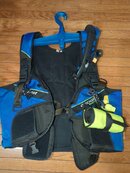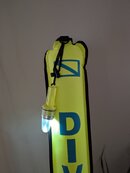mike_bayer
Contributor
This is getting ridiculous.
Just stay aware, calm and be ready to drop your weights and inflate BCD if necessary. I'd say it's 1 in a 1000 odds or less. Most divers will never experience this phenomenon.
Awareness is a key. You can probability even avoid getting in trouble in the first place. Be acutely aware of ear pressure changes, watch the direction of your bubbles, watch the reef and other divers around you.
You might be able to swim away while the down current is gentle before you get into potential trouble.
Choose a shop with experienced dive masters and captains. Cozumel is a safe and beautiful place to enjoy diving.
Just stay aware, calm and be ready to drop your weights and inflate BCD if necessary. I'd say it's 1 in a 1000 odds or less. Most divers will never experience this phenomenon.
Awareness is a key. You can probability even avoid getting in trouble in the first place. Be acutely aware of ear pressure changes, watch the direction of your bubbles, watch the reef and other divers around you.
You might be able to swim away while the down current is gentle before you get into potential trouble.
Choose a shop with experienced dive masters and captains. Cozumel is a safe and beautiful place to enjoy diving.






